If you’ve ever picked up a two-handed fly rod to swing for fish, you’ve undoubtedly heard of a Skagit fly line. Skagit lines are the workhorses of the two-hand world. Burly and strong, these lines do the grunt work and excel at throwing heavy flies and weighty tips. This performance is a fitting homage to the line’s namesake river in Washington state’s North Puget Sound.
For decades, the mighty Skagit River has been the powerhouse of Pacific Northwest steelheading. Its diminishing but sturdy returns of wild winter steelhead, some reaching twenty pounds with occasional rumors of a fabled thirty pounder, satiated the steelhead thirst of Washingtonians and others from near and far. And its hallowed waters have served as the grounds of innovation for much of what we know about catching steelhead on the swing.
However, time and the hands of man have not been kind to the beloved Skagit. Despite relatively intact upriver habitat and wild steelhead returns that remain robust in comparison to the dire straits of other watersheds flowing through “Pugetropolis”, the Skagit is struggling.
Years of excessive harvest (commercial, tribal and recreational), dam operations, some development and habitat loss (particularly lower in the watershed), and failed hatchery programs have combined to dramatically reduce the Skagit’s steelhead run. In a little over a century, a river that once produced a yearly run of well over 100,000 wild steelhead now sees returns of less than 9,000 fish.
Despite the steelhead loss on the Skagit, the river has maintained its mantle as the mightiest of Puget Sound steelhead rivers. That fact is both a testament to the resilience of Skagit steelhead and the breadth of steelhead destruction – a pernicious force that has reduced Puget Sound steelhead to just three percent of their historical abundance and earned these magnificent fish the disheartening label “Threatened” on the Endangered Species List.
As part of the plan to rebuild depleted wild steelhead populations of Puget Sound watersheds, the Washington Department of Fish & Wildlife (WDFW) has begun a process to create Wild Steelhead Gene Banks. Put simply, a Wild Steelhead Gene Bank is a river or river system/watershed where hatchery operations are prohibited, preserving the waterway(s) for wild, native fish. These gene banks essentially create wild steelhead sanctuaries, taking the simple, logical, and cost-effective step of removing one of the largest obstacles to wild steelhead recovery — hatchery steelhead.
While hatchery steelhead are intended to supplement diminishing wild populations, in actuality they play a far more nefarious role as culprits of further steelhead decline - a fact that has played out time and again in rivers across the steelhead’s native range. By removing hatchery plants, wild steelhead are safeguarded from the ecological and genetic threats of tank-bred fish. Doing so not only helps conserve steelhead populations but also helps facilitate the recovery of these wild fish.
Wild Steelhead Gene Banks provide an unprecedented opportunity to permanently eliminate the threat of hatchery fish on the Skagit and in other watersheds across Puget Sound where habitat conditions and persistent wild returns are sufficient for steelhead recovery, such as the famed Elwha and Puyallup Rivers. In order to take advantage of this opportunity, anglers need to unite to convince WDFW to designate these entire watersheds as Wild Steelhead Gene Banks.
The creation of at least three Wild Steelhead Gene Banks is required under Washington’s State Steelhead Management Plan, but WDFW has significant latitude over how many rivers and which rivers they designate. With hatchery proponents working aggressively to limit these designations to three smaller tributaries, it is critical that wild steelhead advocates speak up and tell WDFW to designate the Skagit, Puyallup, and Elwha – river basins that have the diversity, abundance, and habitat to thrive as gene banks.
A plethora of watersheds would still receive plants of hatchery steelhead, producing short-term angling opportunity across the region. However, in the steelhead sanctuaries, one of the barriers to wild steelhead recovery would be gone. Providing hope for a wild future on some of the region’s most promising rivers. And hopefully a successful blueprint for reduction in hatchery operations on other watersheds in the future.
Additionally, it is important that anglers encourage WDFW to establish Wild Steelhead Gene Banks based on entire watersheds, not just the namesake river. This point is essential since there must be a watershed-wide absence of hatchery fish to prevent the multitude of negative ecological and genetic consequences that occur when wild fish interact with their hatchery counterparts. Failure to do so would fundamentally undermine the efficacy of a Wild Steelhead Gene Bank.
For years, we have known the first step to rebuilding wild steelhead populations in Puget Sound. We have just lacked the tools to take that step. Now with Wild Steelhead Gene Banks we finally have that tool, but wild steelhead advocates must unite to ensure WDFW wields it correctly.
The time is now. Speak up and tell WDFW to designate the entire Skagit, Elwha, and Puyallup watersheds as Wild Steelhead Gene Banks. It’s the right thing to do for an iconic wild fish, for future generations of anglers who will pursue them, and for wild and mighty Northwest rivers both call home.




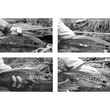

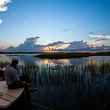
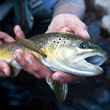




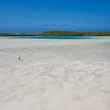



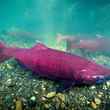
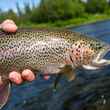



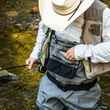
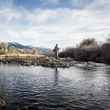




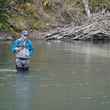


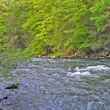
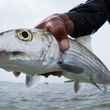
Comments
Dave replied on Permalink
Nicely done Jonathan!
Gabe replied on Permalink
Great stuff Jonathan
Dwayne replied on Permalink
Basin wide make sense.
Ken McLeod replied on Permalink
Bunch of bunk. Early timed chambers creek stock steelhead have been repeatedly shown to have insignificant impact on wild runs. Get with the times. This argument was over long ago, that's why the WFC and constituents resort to lawsuits to get their way.
JP replied on Permalink
Ken - link to the studies/research showing this, please? Would be interested to read them.
Gabe replied on Permalink
Other than the preponderance of evidence showing that hatchery fish are less fit and dilute the gene pool therefore degrading the ecosystem they occupy, hatchery fish are great. I suppose if the goal is to just catch, bonk, smoke and eat them we have a great system. I for one feel that creates an imbalance in the entire system and eventually will degrade it beyond its capacity to support any type of sustainability of recreating in the fisheries described. Just my opinion.
Gary Strassburg replied on Permalink
Nice write up Jonathan! To establish the Skagit, Puyallup and Elwha rivers as WSGB's is a must. This still leaves a lot of Puget Sound rivers left for hatchery Steelhead fishing. Noteably the Sky and the Nook... the Sky is still a fantastic river with history steeped in hatchery fishing from Reiter.
Selecting the above 3 rivers as WSGB's will cover some fantastic Wild Steelhead habitat.
Jack B. replied on Permalink
Very nicely done Jonathan!
Chad Shmukler replied on Permalink
GOOD NEWS: Thanks to requests, WDFW has extended the comment period regarding the creation of Wild Steelhead Gene Banks until 8/31.
If you didn't get a chance to speak up already, now you can.
wasabi replied on Permalink
Nice Job Jonathan , But I would like to suggest you research , the effects/ Dieases that have come from the introduction of the atlantic Salmon Farms into the British Columbia area, upon the native Salmon and Shellfish of the Northwest
Check out " Salmon Confidential" on Youtube.
There is currently a Law suit going on against the Canadian Government.
Shell Oil and Norways Salmon Farms
I think everyone reading will be surprised and Devastated by what is going on.
Thanks
Thanks for the
Pages